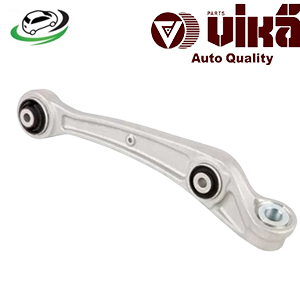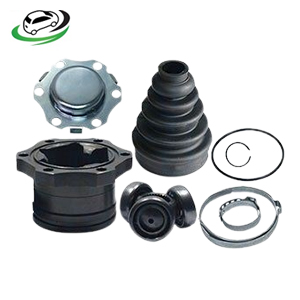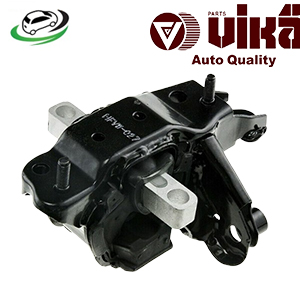Get Left Side Engine Mount Volkswagen Polo 1.2L/Petrol / Polo 1.6L/Petrol / Vento 1.6L/Diesel 6Q0199555AS
The right hydraulic engine mount is a vital component in modern vehicles, particularly in those equipped with powerful engines. Engine mounts, in general, are designed to secure the engine to the vehicle’s chassis, absorb vibrations, and minimize noise. Among these, hydraulic engine mounts are increasingly common due to their superior ability to dampen vibrations and provide a smoother driving experience. The right hydraulic engine mount, specifically, plays a critical role in maintaining the stability and performance of the engine, especially in transverse-mounted engines where the right side is often subjected to more stress.
Purpose of the Right Hydraulic Engine Mount
The primary function of the right hydraulic engine mount, like all engine mounts, is to hold the engine in place and absorb vibrations that emanate from the engine during operation. The engine generates significant vibrations and movement due to the combustion process, and without proper mounts, these forces could transfer directly to the vehicle’s chassis, leading to a noisy, uncomfortable ride and potential damage to other vehicle components.
Hydraulic engine mounts are filled with a fluid—usually oil—that helps absorb and dampen these vibrations more effectively than solid rubber mounts. The right hydraulic mount, typically located on the passenger side of the engine bay, bears a substantial portion of the engine’s weight and is subjected to higher stress levels, especially in front-wheel-drive vehicles where the engine is mounted transversely.
Construction and Working Principle
A right hydraulic engine mount consists of several key components that work together to isolate engine vibrations:
- Outer Housing:
- Material: Typically made from durable metal, the outer housing protects the internal components of the mount and attaches it to the engine and chassis.
- Function: It provides the structural integrity needed to secure the engine in place and withstand the forces acting upon the mount.
- Elastomeric (Rubber) Material:
- Material: A layer of rubber or elastomeric material surrounds the hydraulic fluid chamber.
- Function: This rubber acts as a secondary damper, absorbing some vibrations and preventing them from reaching the vehicle’s frame. It also provides some flexibility, allowing the engine to move slightly without transmitting shocks directly to the chassis.
- Hydraulic Fluid Chamber:
- Fluid: The chamber is filled with hydraulic fluid, typically oil, which absorbs and dissipates vibrations.
- Function: As the engine moves, the hydraulic fluid is forced through small orifices within the mount, converting the vibrational energy into heat and reducing the amount of vibration that reaches the chassis. The fluid’s viscosity allows it to dampen a wide range of frequencies, making hydraulic mounts more effective than traditional rubber mounts.
- Internal Valves and Diaphragms:
- Function: These components regulate the flow of hydraulic fluid within the mount. Some advanced hydraulic mounts feature electronically controlled valves that adjust the damping characteristics based on engine speed, load, and driving conditions, providing adaptive damping for improved comfort and performance.
Benefits of the Right Hydraulic Engine Mount
The right hydraulic engine mount offers several significant advantages over traditional solid rubber mounts, particularly in terms of comfort, performance, and durability:
- Superior Vibration Damping:
- Enhanced Comfort: Hydraulic mounts are exceptionally good at absorbing both low-frequency vibrations (such as those occurring at idle) and high-frequency vibrations (such as those during acceleration). This leads to a smoother and more comfortable driving experience.
- Reduced Noise: By isolating engine vibrations, hydraulic mounts minimize noise transmitted to the cabin, contributing to a quieter ride.
- Improved Engine Stability:
- Better Handling: The right hydraulic engine mount plays a crucial role in maintaining engine stability during various driving conditions. This stability is particularly important during acceleration, deceleration, and cornering, where the engine’s movement could otherwise affect vehicle handling.
- Enhanced Performance: By keeping the engine securely in place, hydraulic mounts help ensure that power is effectively transmitted to the wheels, improving overall vehicle performance.
- Increased Longevity of Vehicle Components:
- Protection of Engine and Transmission: By absorbing vibrations and preventing excessive engine movement, the right hydraulic engine mount reduces the wear and tear on other engine components, such as the transmission, exhaust system, and driveshafts.
- Reduced Wear on Chassis: Minimizing vibrations also helps protect the vehicle’s chassis and body structure from stress-related damage over time.
- Adaptability:
- Adaptive Damping: In some modern vehicles, hydraulic mounts are equipped with electronic control systems that adjust the damping characteristics based on real-time driving conditions. This adaptability provides optimal performance in different scenarios, such as smooth damping during highway cruising and firmer damping during aggressive driving.
Signs of a Worn or Failing Right Hydraulic Engine Mount
Like all components, hydraulic engine mounts can wear out over time, especially since they are subjected to constant stress and harsh operating conditions. Recognizing the signs of a worn or failing right hydraulic engine mount is crucial for maintaining vehicle performance and preventing further damage:
- Increased Engine Vibrations:
- Symptom: One of the most noticeable signs of a failing engine mount is increased vibrations felt in the cabin, particularly when the vehicle is idling. If the mount loses its ability to dampen vibrations, you may feel excessive shaking in the steering wheel, floor, or seats.
- Clunking or Banging Noises:
- Symptom: A worn or damaged hydraulic engine mount may cause the engine to move excessively, leading to clunking or banging noises, especially during acceleration, deceleration, or when driving over bumps.
- Engine Misalignment:
- Symptom: If the right hydraulic engine mount is severely worn or broken, the engine may become misaligned within the engine bay. This misalignment can affect the transmission, exhaust system, and other components, leading to further issues.
- Visible Wear or Damage:
- Symptom: Upon visual inspection, you may notice cracks in the rubber material, leakage of hydraulic fluid, or obvious signs of wear and tear. If the mount appears damaged, it should be replaced immediately.
- Engine Movement:
- Symptom: With the vehicle in gear, you might observe excessive engine movement if you rev the engine slightly while the vehicle is stationary. This movement indicates that the mount is not securely holding the engine in place.
Maintenance and Replacement of the Right Hydraulic Engine Mount
Given the importance of the right hydraulic engine mount, regular maintenance and timely replacement are essential to ensure the vehicle continues to perform well. Here’s what you need to know:
- Inspection Interval:
- Regular Checks: It’s a good practice to inspect the engine mounts during routine maintenance, such as oil changes or during a general vehicle inspection. Early detection of wear can prevent more significant issues.
- Replacement Signs:
- When to Replace: If any of the symptoms of a failing mount are present, it’s time to replace the right hydraulic engine mount. Additionally, it’s recommended to replace all engine mounts simultaneously to maintain balance and consistency in engine support.
- Professional Installation:
- Complexity: Replacing a hydraulic engine mount can be complex, as it often requires lifting the engine slightly to remove the old mount and install the new one. It’s advisable to have a professional mechanic perform this task to ensure proper installation and alignment.
- Cost Considerations:
- Varied Costs: The cost of replacing a hydraulic engine mount can vary depending on the vehicle make and model, as well as labor costs. However, considering the potential damage from a failed mount, it’s a worthwhile investment.
Follow us on Facebook for more parts.



